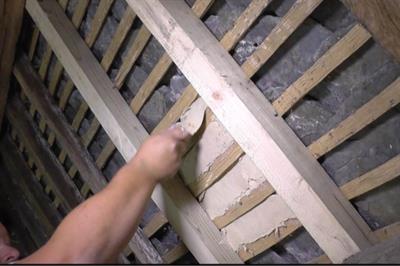Entry Advice
↵Problems and solutions
If you can, we would also like you to tell us how you navigated challenges, or went the extra mile to make sure you achieved a great result. Allowing our judges to fully understand the complexity of the project and how you overcame setbacks is a great advantage. It is great to see high standards in a finished project but it is equally important to understand how this was achieved.
You should also add details around excellent supply chain management, using the project to help apprentices develop their skills, or even involving the local community are impressive elements that we always want to recognise.
Health and safety
This should not be overlooked when submitting your entry, particularly any supporting images. Our judges want to see you demonstrate best practices in health and safety. If you do not have supporting images, make sure to add as much detail as possible.
Companies with a standout young roofer, apprentice or trainee are encouraged to recommend them for the Young Roofer of the Year Award, gaining them recognition for their hard work, commitment and a great start to their career.
Photography Tips
Clear, good quality photography is an absolute must for any UK Roofing Award entry. The images that you select are used by the judges to get a better understanding of the project (such as scale and workmanship). They are also used as a means to back up the written aspect of the entry, so if you talk about the vast scale of the project then consider including an aerial shot.
Below are a number of other good and bad examples of photography:
1. Take photographs throughout the project, not just on completion
By taking photographs throughout the entirety of a project you stand a better chance that you have a good range of photographs to select from. A good set of photographs includes one or two long shots of the finished roof, a few works in progress and a few mid-range ones of finished or partly finished details.
2. Clear Shots
Steer clear of any images where the project is obscured by trees, buildings etc.
3. Include images that show work in progress.
These help the judges get a better understanding of how the roof/ certain elements were constructed.

A close up detail of work in progress.
4. Visible PPE
Your images will likely show people working on site, it is absolutely essential that the correct PPE is shown i.e. hard hats, high-visibility clothing etc.

Visible PPE as well as a clear shot of detailing in progress.
5. Close up shots of finished detailing
Judges like to be able to zoom in to check for neatness of workmanship and to see any difficult or unusual details.
6. Camera Phones
Since they were first introduced back in 2000, camera phones have come along way, and in some instances have been known out perform even the best digital camera. One of the best things about camera phones is the fact that nearly everyone has one, so why not encourage site operatives to take (safely) photographs of their work throughout the project.
7. Send High Resolution
Always submit the highest resolution version of the photographs you have, as that will allow the judges to 'zoom in' and look to consider specific details. The minimum resolution that we will normally consider is 3000 x 2000 pixels. Also don't apply too much compression to the image, the JPEG quality should be set to high or maximum. Typically a good image will have a filesize of at least 2 MB, if the filesize is less than ~750 kB then it is unlikely to be good enough for the judges to fairly review.
Finally
Remember, any photos that include the contractor's name or logo, or any other means of identifying who the contractor is, cannot be accepted. The judging is done anonymously and therefore the organisers reserve the right to edit or delete any photographs that could reveal to the judges who the contractor for the project is.
If you are ready to begin your application, do so via our dedicated awards platform.




